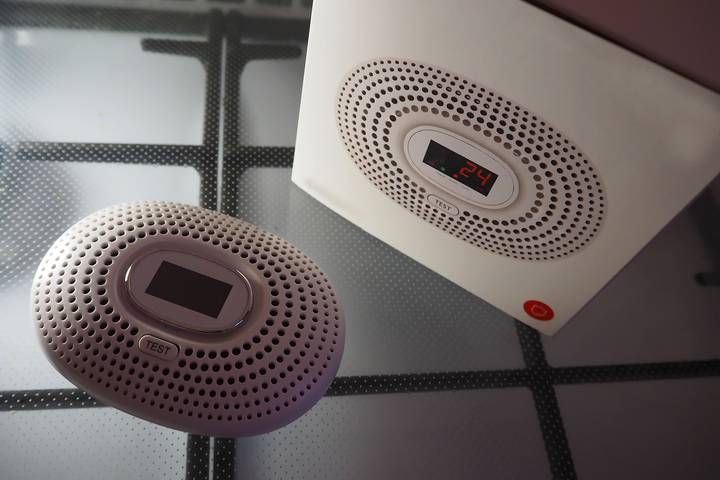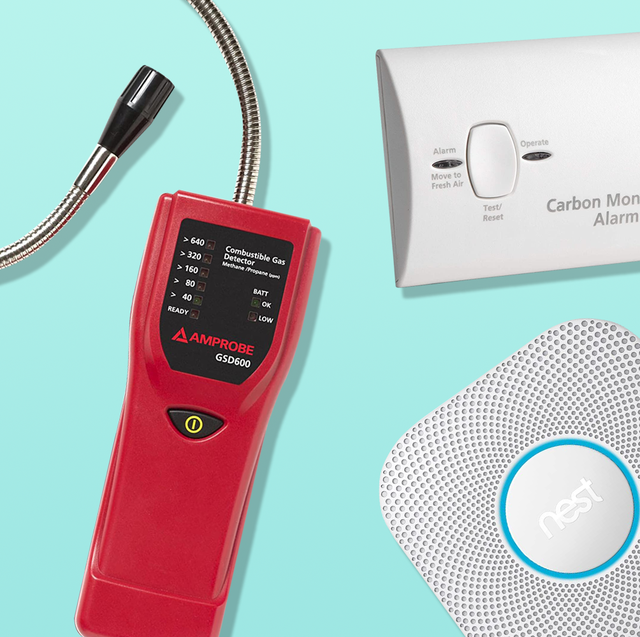To use a leak detector, turn it on and slowly move it along potential leak areas until it detects a leak. Leak detectors are handy tools for identifying gas or water leaks in pipes, appliances, or vehicles.
Leak detectors provide a quick and efficient way to pinpoint leaks and prevent potential damage. Regularly checking for leaks using a detector can save you time and money by addressing issues early on. By following a few simple steps, you can effectively use a leak detector to ensure the safety and integrity of your surroundings.
Whether you are a homeowner or a professional, having a leak detector on hand is a valuable investment in maintaining a secure environment.
Choosing The Right Leak Detector
When choosing a leak detector, consider the type of leak and its sensitivity levels. Different detectors are designed for specific types of leaks and varying levels of sensitivity.
Understanding the type of leak you are dealing with is crucial in selecting the right detector to effectively identify and locate the leak source. Sensitivity levels determine the smallest amount of leakage the detector can detect, ensuring accurate results.

Credit: m.facebook.com
Preparation Steps
In order to properly use a leak detector, there are a few preparation steps you should take. First, it is crucial to read the instruction manual carefully to understand how to operate the detector correctly. This will help you avoid any potential errors or mishaps during the testing process.
Next, make sure to check the batteries of the leak detector and ensure they are fully charged. Having a fresh set of batteries will guarantee that the detector functions optimally and accurately detects any gas leaks. Additionally, it is essential to calibrate the detector before each use to ensure accurate readings. Calibration helps the detector maintain its sensitivity levels and provide reliable results.
By following these preparation steps, you can efficiently and effectively use a leak detector to identify and address any potential gas leaks in your environment.
Conducting The Leak Detection
Sure, I can help you with that. “`html
When using a leak detector, ensure you select the appropriate setting based on the type of material you are inspecting. For example, if you are looking for refrigerant leaks, set the detector to the refrigerant setting. Proper setting selection is crucial for accurate results.
When conducting the leak detection, it’s essential to methodically scan the area to ensure thorough coverage. Start from one end and systematically move across the entire area, ensuring there are no gaps or overlaps. This systematic approach increases the chances of detecting any leaks present.
Interpreting Results
When using a leak detector, it is essential to pay attention to visual and audible cues. Visual cues may include flashing lights or color changes on the detector, while audible cues could involve beeping or buzzing sounds. These cues can indicate the presence of a leak and guide your next steps.
Noting changes in readings is crucial for effective leak detection. Keep an eye on any fluctuations or sudden spikes in readings, as these can signify a potential issue that requires further investigation. By consistently monitoring and interpreting the results, you can efficiently identify and address leaks, ensuring the integrity of your systems.
Troubleshooting Tips
When using a leak detector, it is important to troubleshoot any potential issues that may arise. One common problem is encountering false positives, where the detector indicates a leak when there isn’t one. To address this, it is crucial to look for and address any interference issues that may be causing the false positives. One way to do this is to ensure that there are no other electronic devices nearby that could be generating signals that interfere with the detector. Additionally, it is important to check for any nearby sources of electromagnetic interference, such as power lines or RF transmitters. By eliminating or minimizing these sources of interference, you can improve the accuracy of the leak detector and avoid false positives.

Credit: www.elements-magazine.com
Maintenance And Storage
Cleaning the Detector Regularly: Wipe the detector with a damp cloth. Don’t use abrasive cleaners. Ensure the sensor area is free of dust and debris to maintain accuracy.
Proper Storage to Maintain Accuracy: Store the detector in a cool, dry place. Avoid extreme temperatures. Keep it away from direct sunlight and moisture to prevent damage.
Safety Measures
Discover the essential safety measures to effectively use a leak detector and keep your environment secure. Learn the proper techniques for detecting leaks and safeguarding against potential hazards.
| Safety Measures |
| 1. Always wear proper protective gear like gloves and goggles. |
| 2. Make sure to adequately ventilate the area before using the leak detector. |
Seeking Professional Help
Learn how to effectively utilize a leak detector by seeking professional help. Gain valuable insights and guidance on using this essential tool accurately for detecting leaks in your home or property. Master the art of leak detection with expert assistance to ensure timely and efficient leak identification.
Certainly, here is a simple table to convey the information:
| When to Consult a Professional | The Services of a professional should be sought when you are unsure about the source of the leak or when the leak detector indicates a major problem. |
| Importance of Regular Inspections | Regular inspections are crucial in ensuring the early detection of leaks, which can prevent extensive damage to your property and save on repair costs. |

Credit: www.linkedin.com
Frequently Asked Questions Of How To Use A Leak Detector
What Does A Leak Detector Do?
A leak detector is designed to identify and locate leaks in various systems such as plumbing, HVAC, and automotive. It works by detecting changes in pressure, sound, or temperature to pinpoint the source of the leak accurately.
How To Use A Leak Detector Efficiently?
To use a leak detector effectively, ensure it is calibrated, then slowly move it around the suspected area while observing the readings. Be patient and thorough in your search, and follow the manufacturer’s instructions for best results.
Can A Leak Detector Be Used For Gas Leaks?
Yes, many leak detectors are specifically designed to detect gas leaks, including natural gas and propane. These detectors use various technologies such as infrared sensors or semiconductor sensors to identify the presence of gas in the environment.
Conclusion
Using a leak detector is a simple yet effective way to identify and address leaks in your home or business. By following the steps outlined in this blog post, you can ensure that you are using your leak detector correctly and efficiently.
Remember to regularly check for leaks to prevent any potential damage and save on water bills. With proper care and attention, a leak detector can be a valuable tool in maintaining the safety and functionality of your property.
